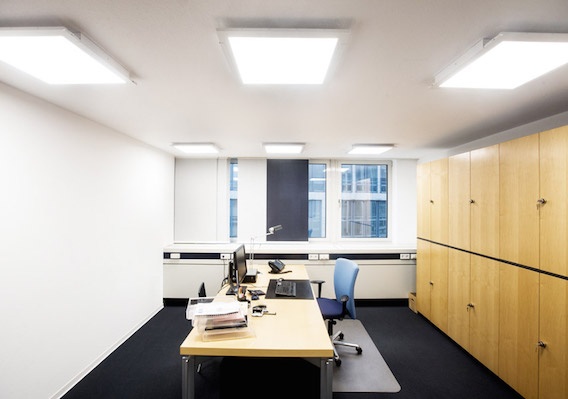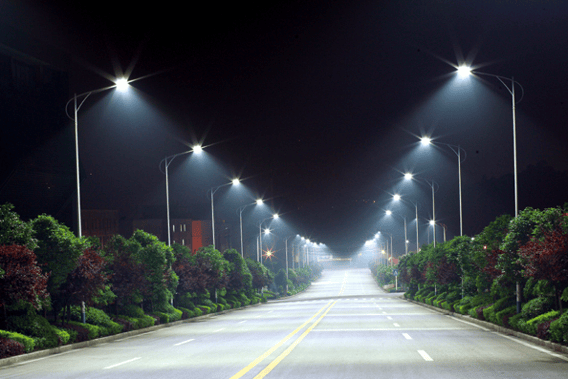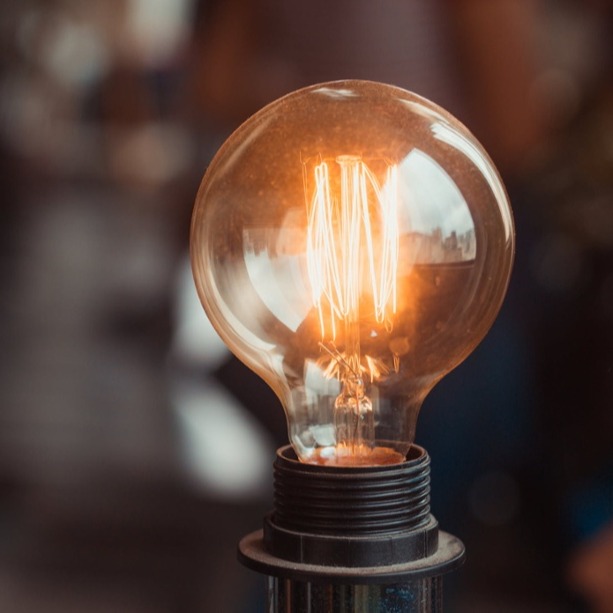Office lights that can adjust based on your light color preference.
Home lights that know your patterns and can turn on and off based on that knowledge.
Streetlights that can detect the sound of bullets and alert authorities.
These features are all part of the future of smart lighting—and the creation of new lighting features like the ones listed above is closer than you think. As light-emitting diodes (LEDs) become more common, lighting features in both interior and outdoor settings are becoming more easily connected via the Internet of Things (IoT), thus becoming “smarter.”
According to a market assessment by Strategies Unlimited, half of the residential market will replace their current lights with LEDs by 2022. This is a pretty significant estimate considering LEDs made up only 5% of the lighting market in 2014. As LEDs become more popular, more opportunities for smart lighting become available.
Read More: Smart lighting as a foundation for a smart city
There are two broad categories of lighting—outdoor lighting and interior lighting—and below, we’ll cover how these categorizations are becoming interconnected and intelligent.
Interior Lighting

The future of interior smart lighting will focus on wireless lighting control—getting the correct amount of light to occupants at the right time and in the right away.
When you create a smart building, natural lighting is taken into consideration. In any building, they’ll want to use natural light as much as possible for energy efficiency and cost savings. But with a smart building, overhead lighting and natural lighting work in tandem: for example, if a cloud passes over and the rooms become dark, lights automatically turn on.
LEDs & Lighting Intelligence
Like outdoor lighting, indoor lighting is moving to LED. The fluorescent light replacements aren’t as mature for LEDs—and they are fairly expensive—so there are still a lot of fluorescent bulbs out there (and there probably will be for quite some time). Additionally, fluorescent lights are far more energy efficient than they used to be, which is why LEDs are having a much harder time penetrating the indoor lighting market. For example, right now, if you go to a building and want to replace a light, you pull out the old tube and put the old tube in the troffer. But if you want to replace an LED, you have to remove the entire troffer and put a whole new one in. Or, you have to get a pretty sophisticated LED with a light guide to replace that fluorescent bulb that would give out the same light.
Fluorescent lights are designated by the length in millimeters of each bulb. In the past, T12s existed—they were big fat tubes around 40 watts, and they were extremely inefficient (like an old incandescent bulb). They were replaced with more efficient T8s, which are still used in most offices. T8s are about 35 watts, so they require about half the power usage of the T12s and incandescent bulbs. The new T5s emit about the same amount of light as T8s, and they are between 25 and 30 watts, which makes them even more energy efficient.
The moral here is that smart lighting for buildings is less about shifting over completely to LED and more about the management and balance of daylight and artificial light. It’s important to note that smart lighting doesn’t have to be run by LEDs; as far as smart interior lighting is concerned, it can be categorized as any wireless lighting control system that optimizes the amount of light you use. The advantage to using LEDs is that they’re more flexible, because an LED is simply a chip with a light driver. Since you’re putting a microchip in an LED anyhow, you may as well give the bulb the ability to be addressed. Things like individually-addressed IoT lightbulbs would never have existed before LEDs, and they have brought a lot of changes to the lighting market.
The challenge with smart lighting is that, as with many infrastructure-related things, nothing is upgraded until it gets replaced. So in most commercial buildings, bulbs will stay there until they burn out and are replaced with new ones. But replacement is the perfect time to upgrade any fluorescent and incandescent bulbs to LEDs and other smart features.
Indoor Lighting Use Cases
Interior lighting is all about the comfort and enjoyment of the occupant, so those are the primary areas where you’ll likely start seeing more technological advances:
- Ambiance: Philips Hue is a lightbulb that changes to the right intensity and shade of white for the task at hand. For example, the bulb can dim or change to a specific tone to “match” a certain TV show you are watching.
- Simplicity: Studies show (and your morning routine probably confirms) that people dislike getting up and having to mess with lighting controls. I think you’ll see more and more lighting applications that fall into the intuitive lighting category. So, lights would learn the patterns of the office and go on and off at a certain time (similar to a Nest thermostat learning the temperature patterns of the home). Right now, in many “smart” buildings, lights are set to go off at a certain time. If you’re still working and don’t like to sit in the dark, you have to override the controls. With sensors, you should now be able to optimize this lighting system for the people who are still working in the building instead of killing the power for everyone. This could be done by floor or by zone, as well.
- Light temperature: People prefer different light temperatures, which scale from blue to yellow. Being able to adjust the lighting to your enjoyment in your workspace is something that will be available in the future as well.
- Saving energy: In Europe, lights are usually off in stairwells or rooms until you enter. You either hit a button or motion activates the lights. In the U.S., we just keep all the lights on, all the time. Intelligent lights would allow lights to come on and off based on whether or not a room is occupied.
The future of indoor lighting is bright. Eventually, lightbulbs will know what people are doing and what their preferences are, and they will be able to respond to those things appropriately.
Interior Smart Lighting Network Options
- ZigBee has smart lighting options for interior lighting.
- Some of the first 6LoWPAN options were connected lightbulbs, so they are a player in this field.
- WiFi is almost always an option, because most buildings have some kind of wireless network available.
Outdoor Lighting

Outdoor lighting includes streetlights, floodlights, campus and school lighting, parking lot lighting, and much more.
There are several reasons why streetlights can become “smart” fairly easily, because they’re everywhere, they’re relatively stable, and they always have power.
What make streetlights smart?
Here at Link Labs, we believe light poles are one of the most ripe applications for low power, wide-area networks (LPWAN).
- One of the main reasons LPWANs are suited for light poles is because the height of the endpoint directly affects the range capabilities. Say you have an object that’s roughly 1 meter (or 3 feet) high that you’ve installed a sensor in. With a base station tower that’s about 60 meters (200 feet) tall, you can get 8 kilometers of range. If you were to increase the end node height from 1 meter to 5 meters (the height of some short street lamps), that range would more than double, at almost 18 kilometers. So, you can see how taller streetlights—those around 10 meters high—allow for a sensor and base station to “talk” over a much wider distance.
- Many cities and companies are shifting from a traditional streetlight (like metal halides or gas sulphur) to LED. When they swap out the lumineers, they’re often adding in smarter controls, because the cost and labor of adding a control system is pretty minor compared to the cost of adding the light in general.
- Another thing that’s nice about light poles is that they’re constantly powered. So, you can use them for other applications as well. You can have another repeater on the light pole that can power smart parking sensors, smart water meters, and other smart building elements. So the light pole itself can act as a “Trojan horse” for other smart city applications. We feel very strongly that outdoor streetlights can exponentially increase the power of a low power, wide-area network.
Use Cases For Smart Outdoor Lighting
- Flashlights to assist emergency vehicles.
- Lights that turn on in a certain pattern to guide emergency vehicles to a particular location.
- Lights that turn on and off when they aren’t being used, for increased energy efficiency.
- Audio detection in streetlights to help identify where gunshots are coming from. The streetlight would be able to help law enforcement triangulate an incident and respond quicker.
- Stoplight camera integration.
- Videos for crime detection and prevention.
- Wi-Fi routers.
Eventually, these smart bulbs will act as gateways for an entire smart city, so other smart applications can piggyback on them.
Outdoor Smart Lighting Network Options
- Cellular is an option because the endpoints (typically light poles) are powered, so battery life isn’t an issue.
- Z Wave, ZigBee, and other 802.15.4 mesh networks are also possibilities for outdoor lighting, but increased latency—in this case, waiting for a signal to bounce around the “web” formation and back to a main hub—can be an issue here.
- Star topology networks like Symphony Link are great options, because LPWAN is much less expensive than cellular and more reliable than mesh.
Lighting The Way For The Future Of IoT
Indoor lighting is all about identifying and meeting the needs of its occupants. This, of course, will continue to grow and evolve. Outdoor lighting is beginning to look very promising as a gateway for smarter, better connected cities. It’s an excellent way to bring a long-range wireless signal down to the ground level, and aid in deeper building penetration and greater capability and functionality. Keep your eye on smart lights—they’re beginning to act as the discreet and unpresumptuous center for smart cities everywhere.




